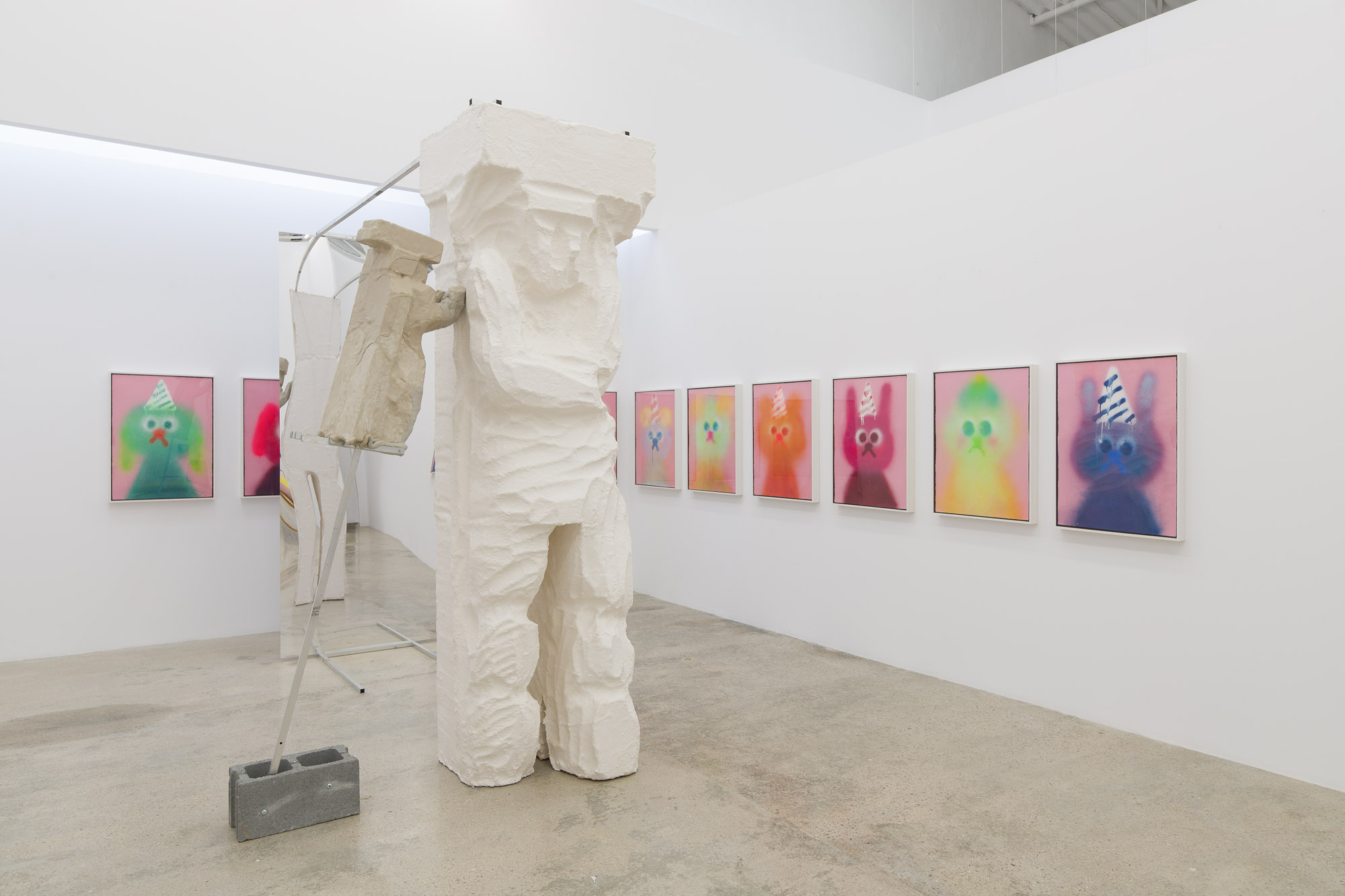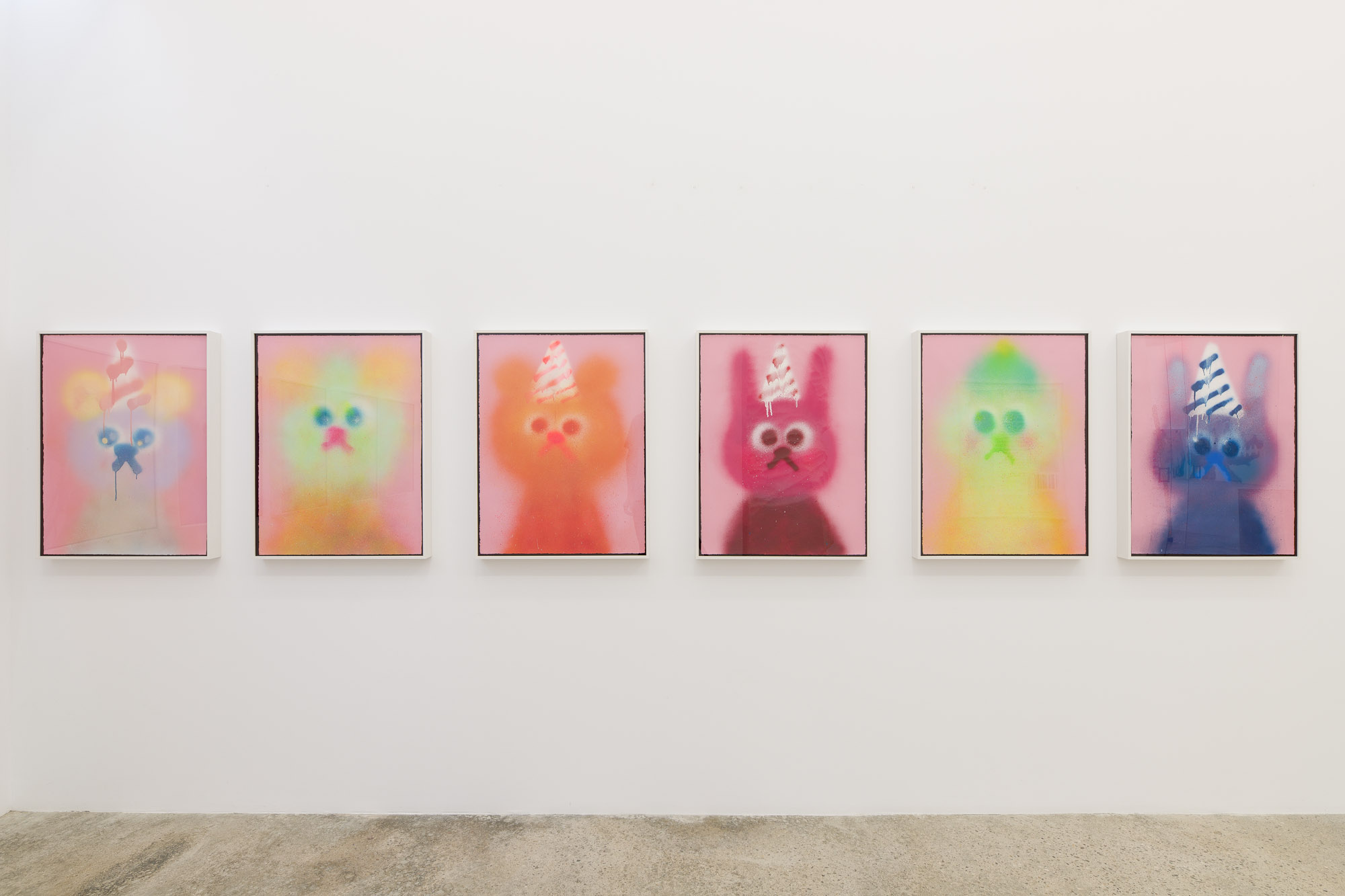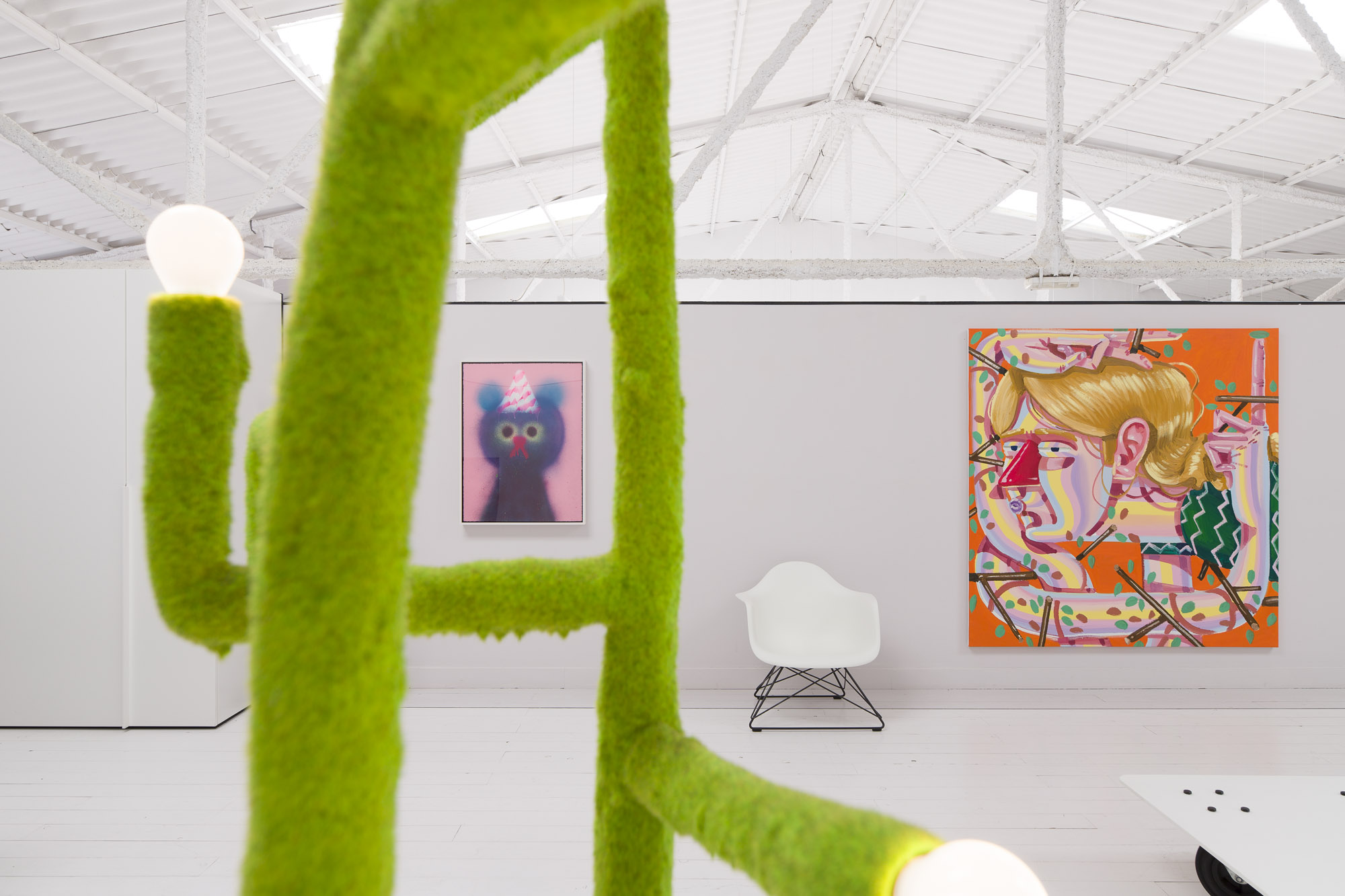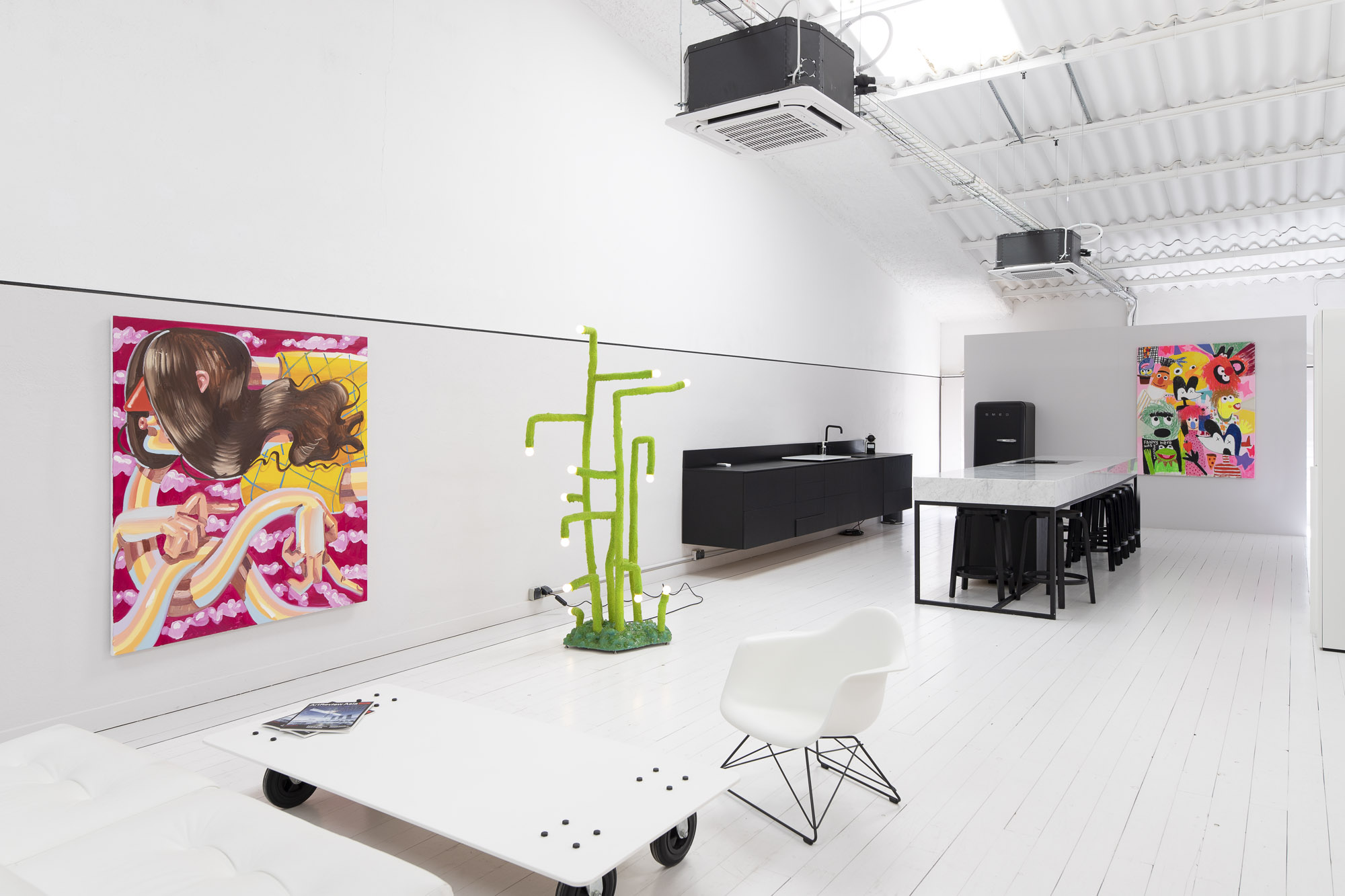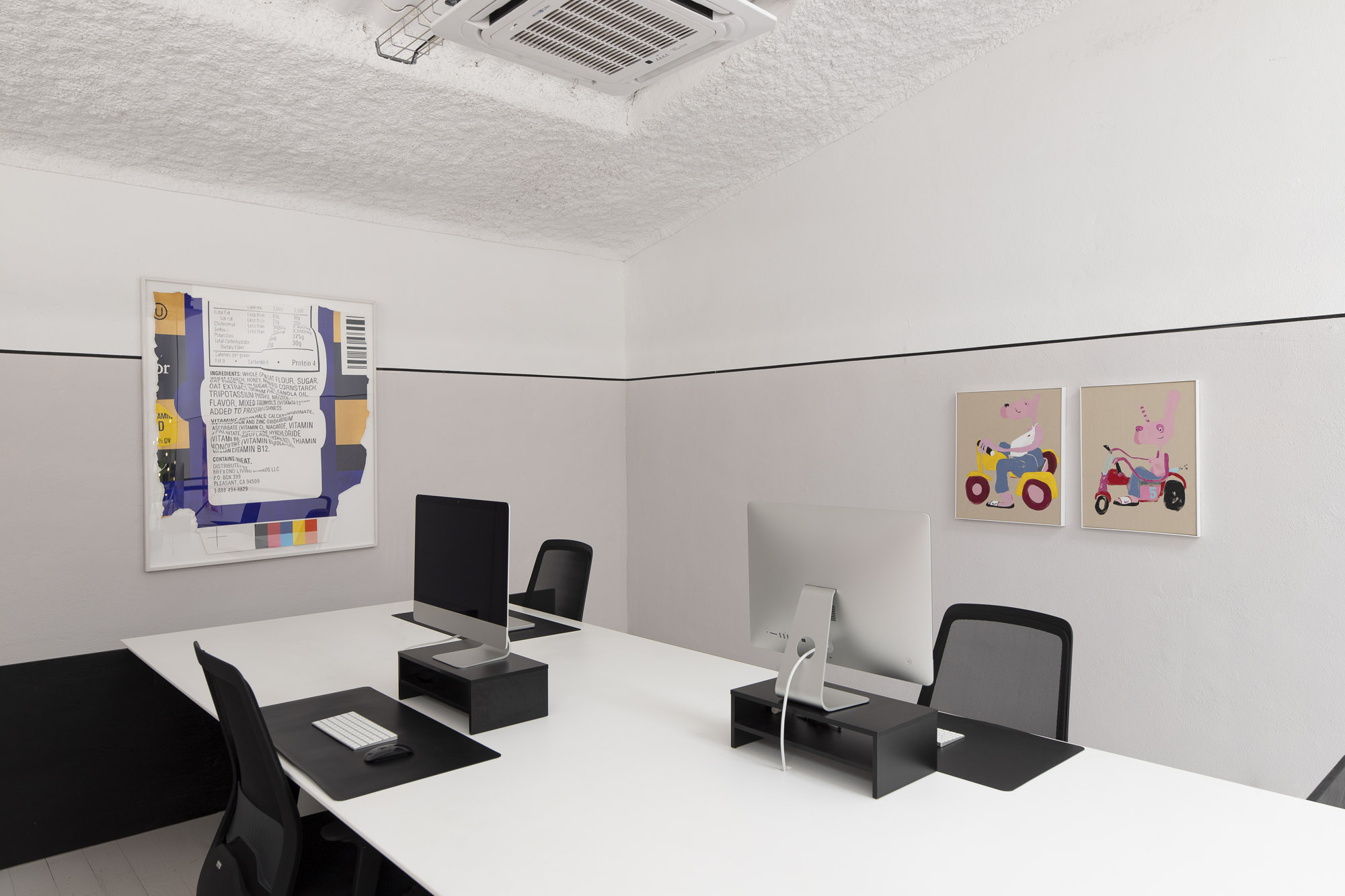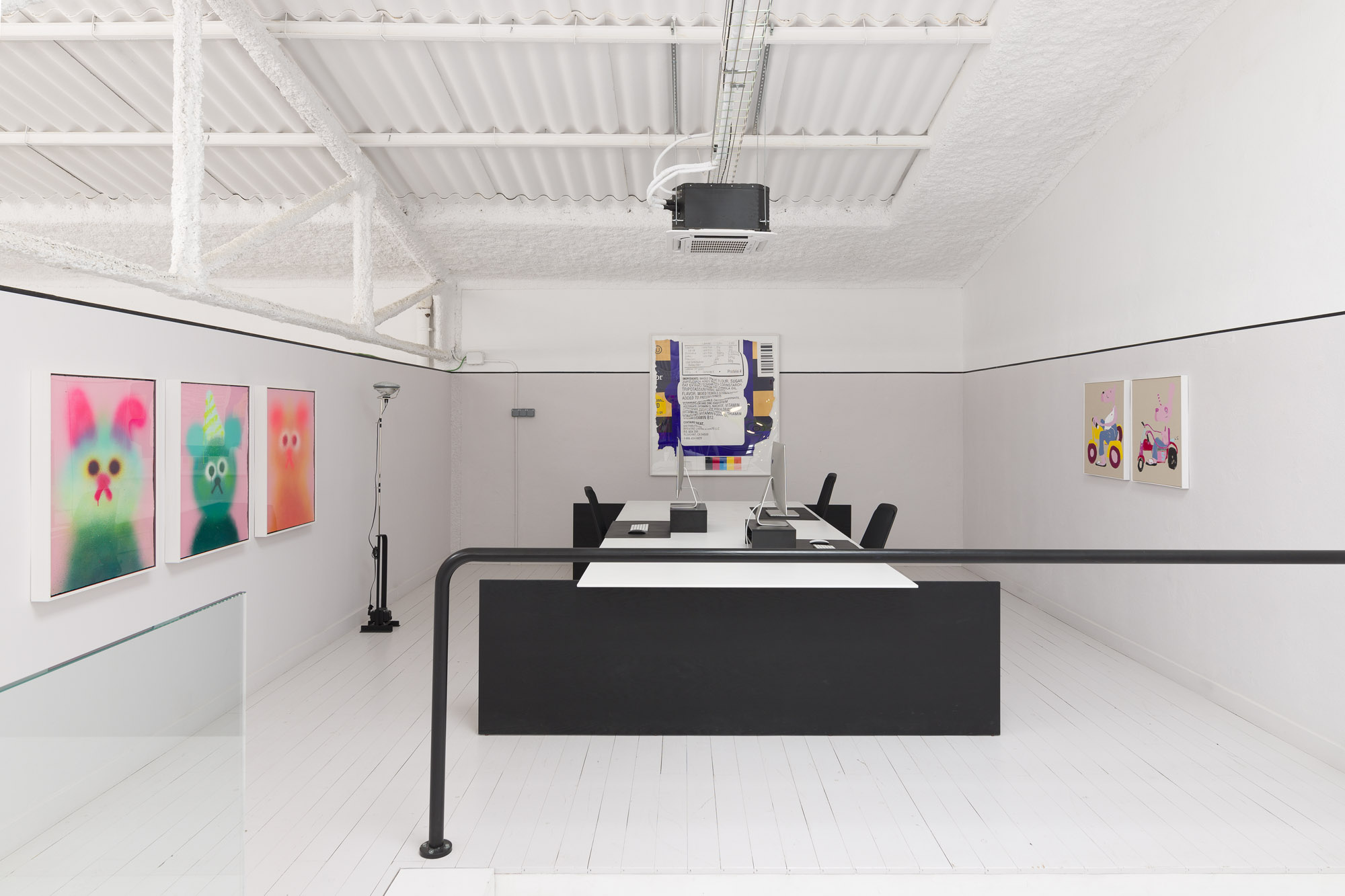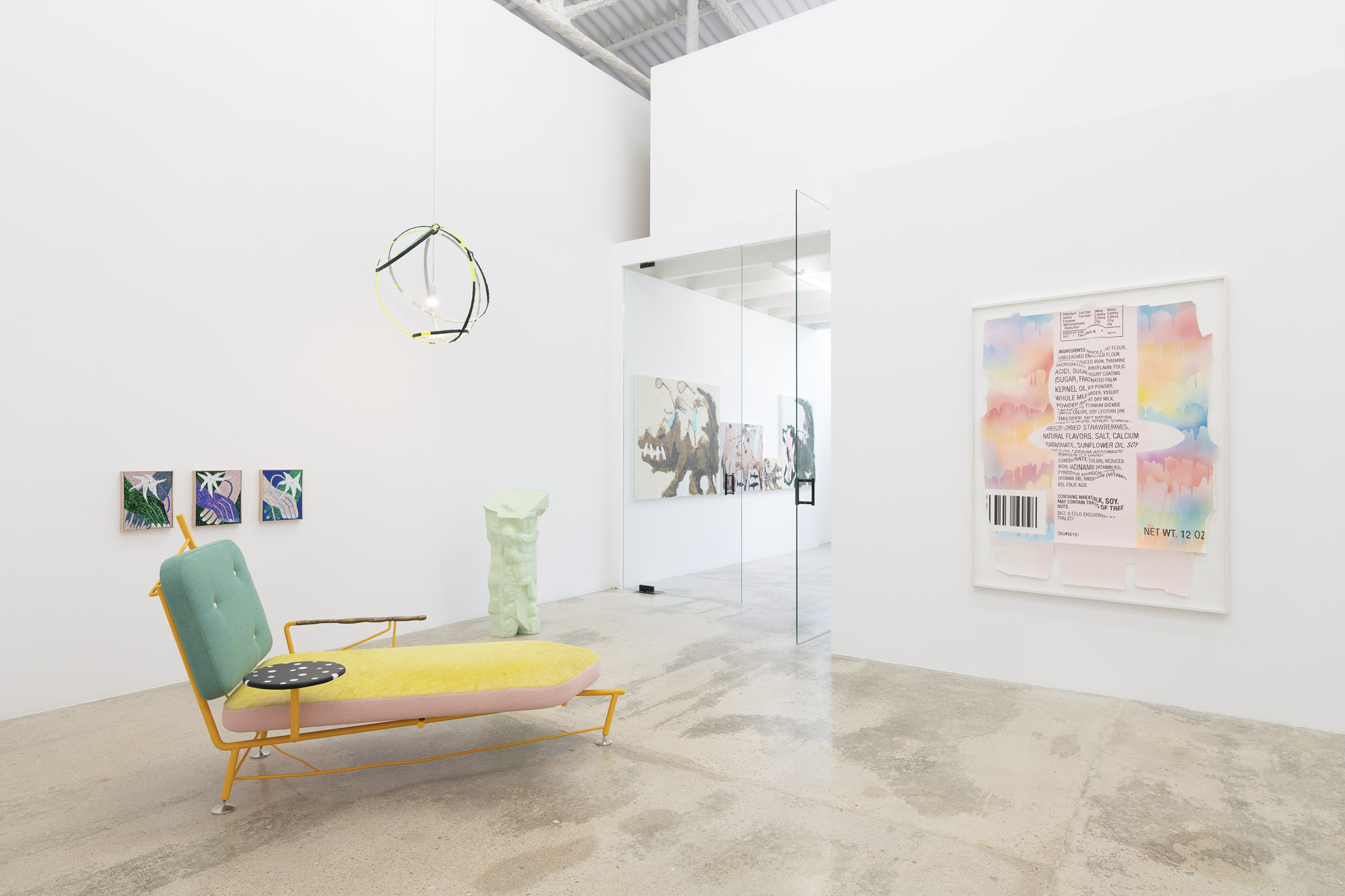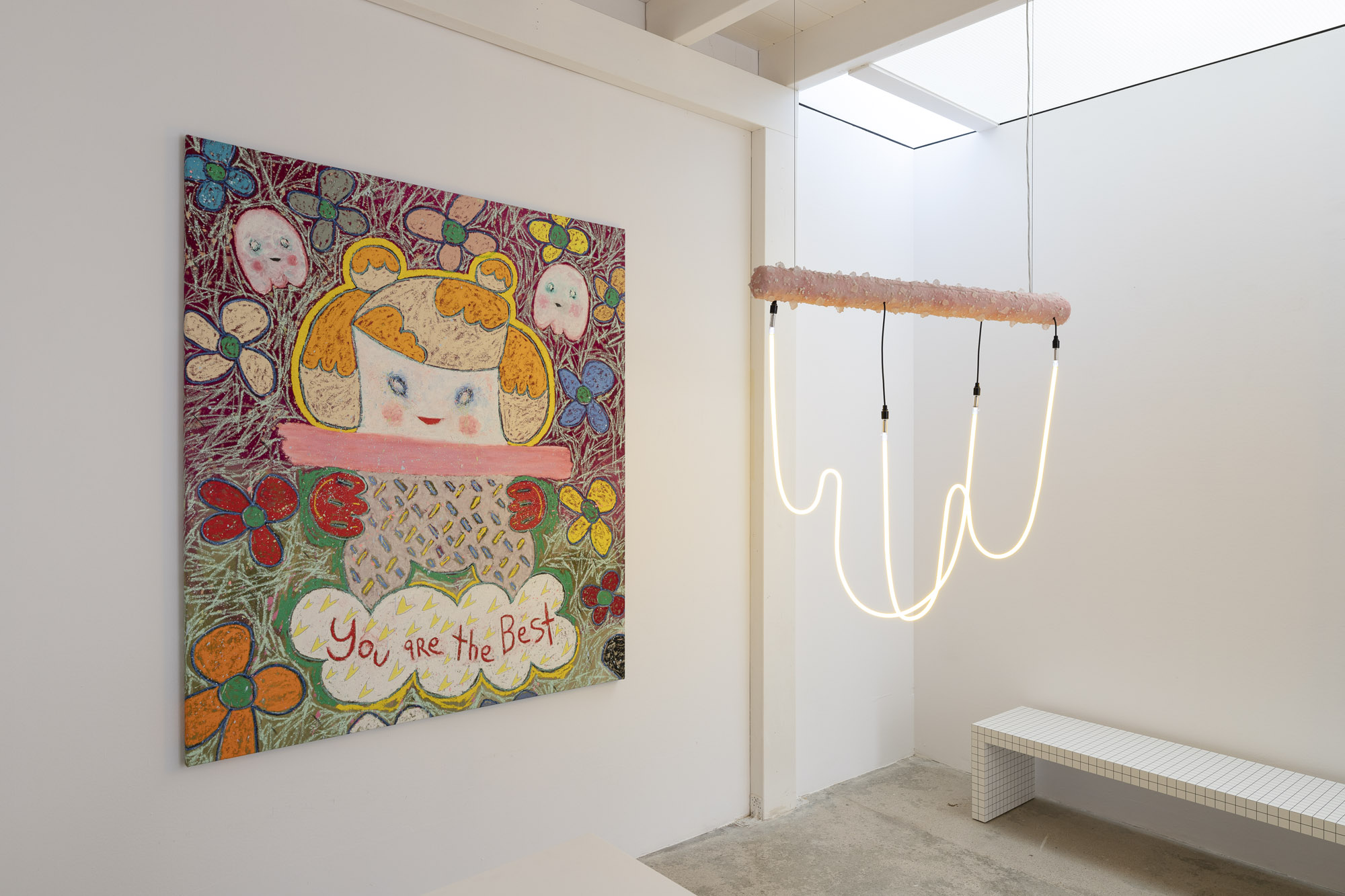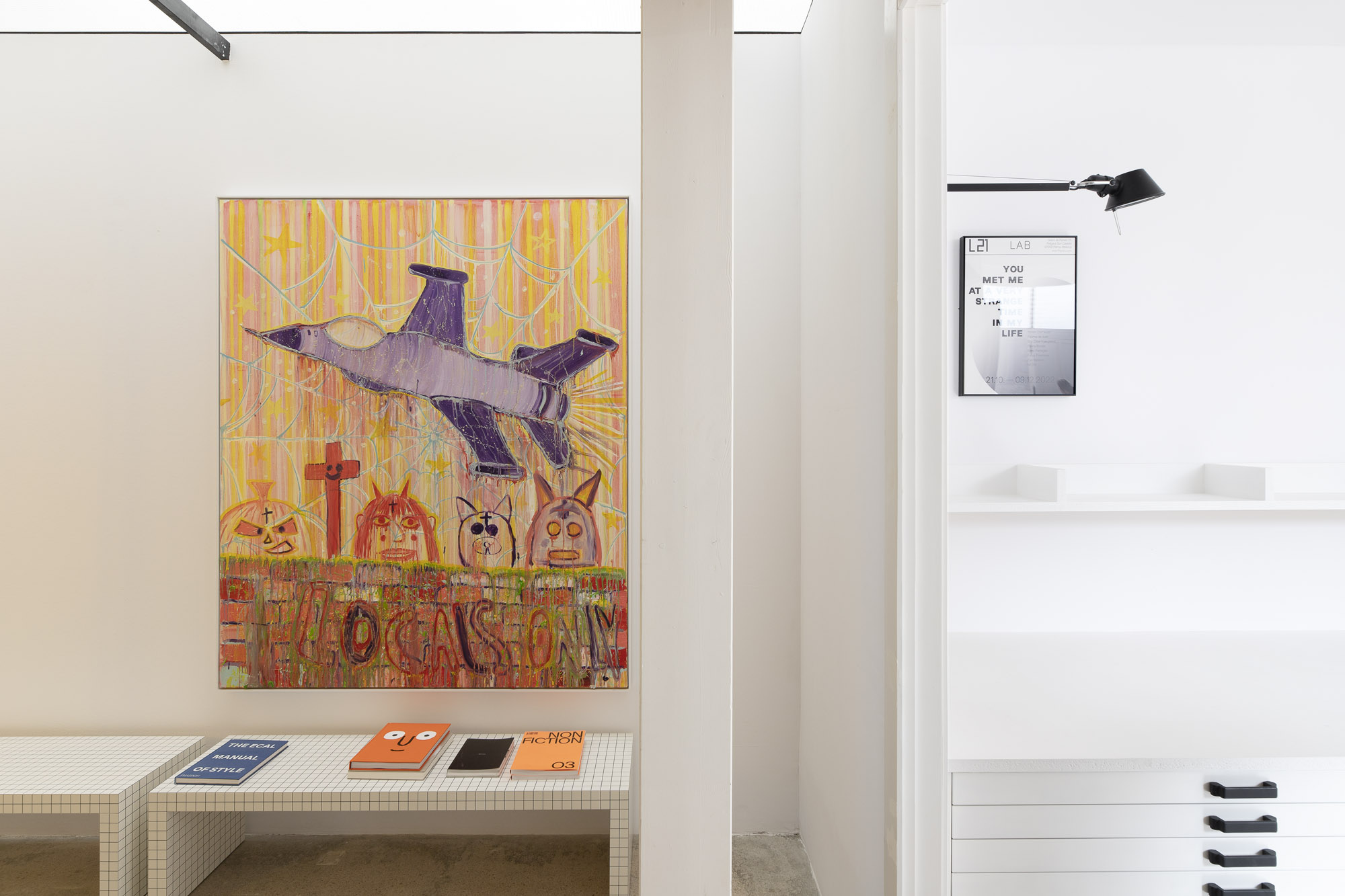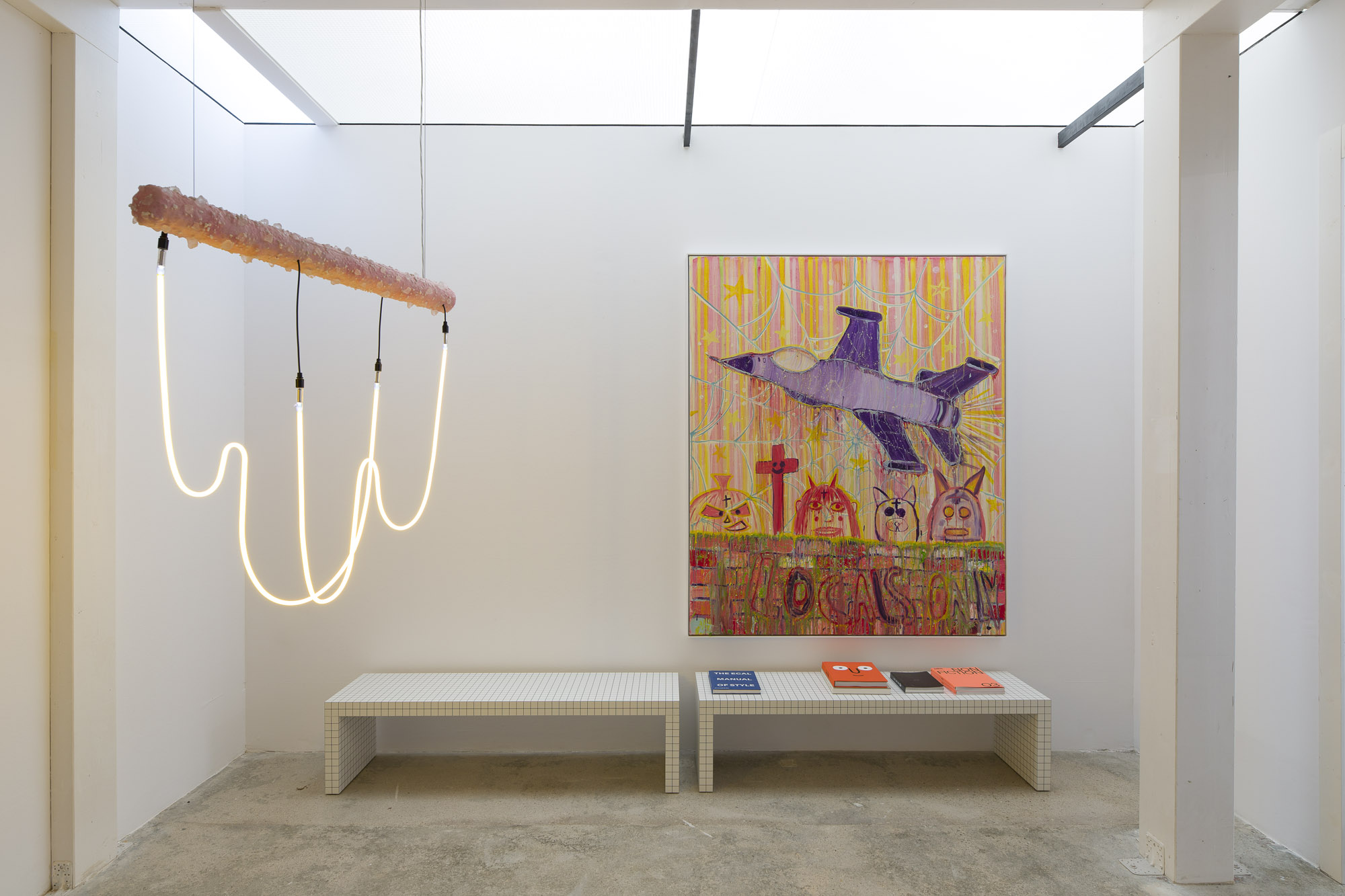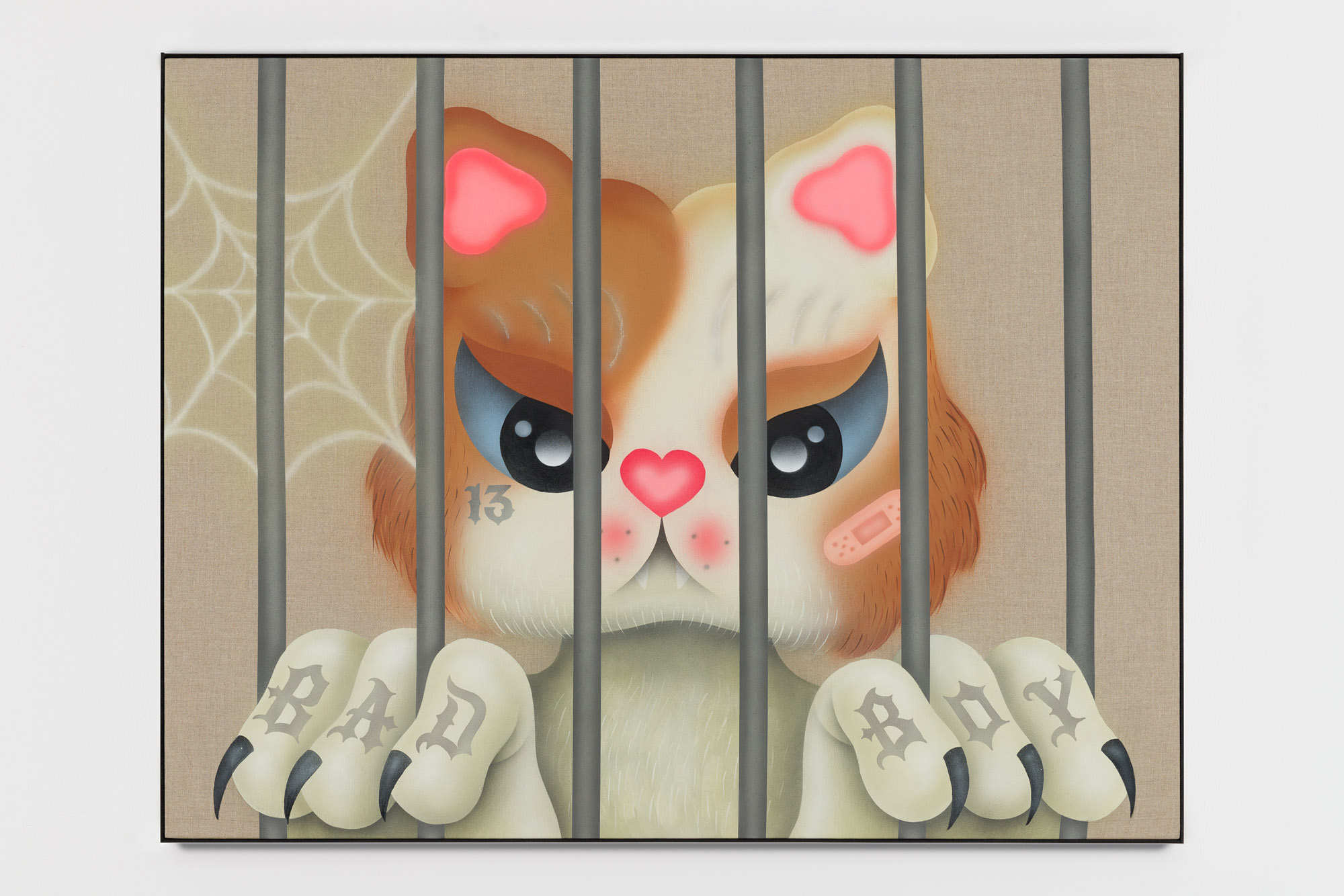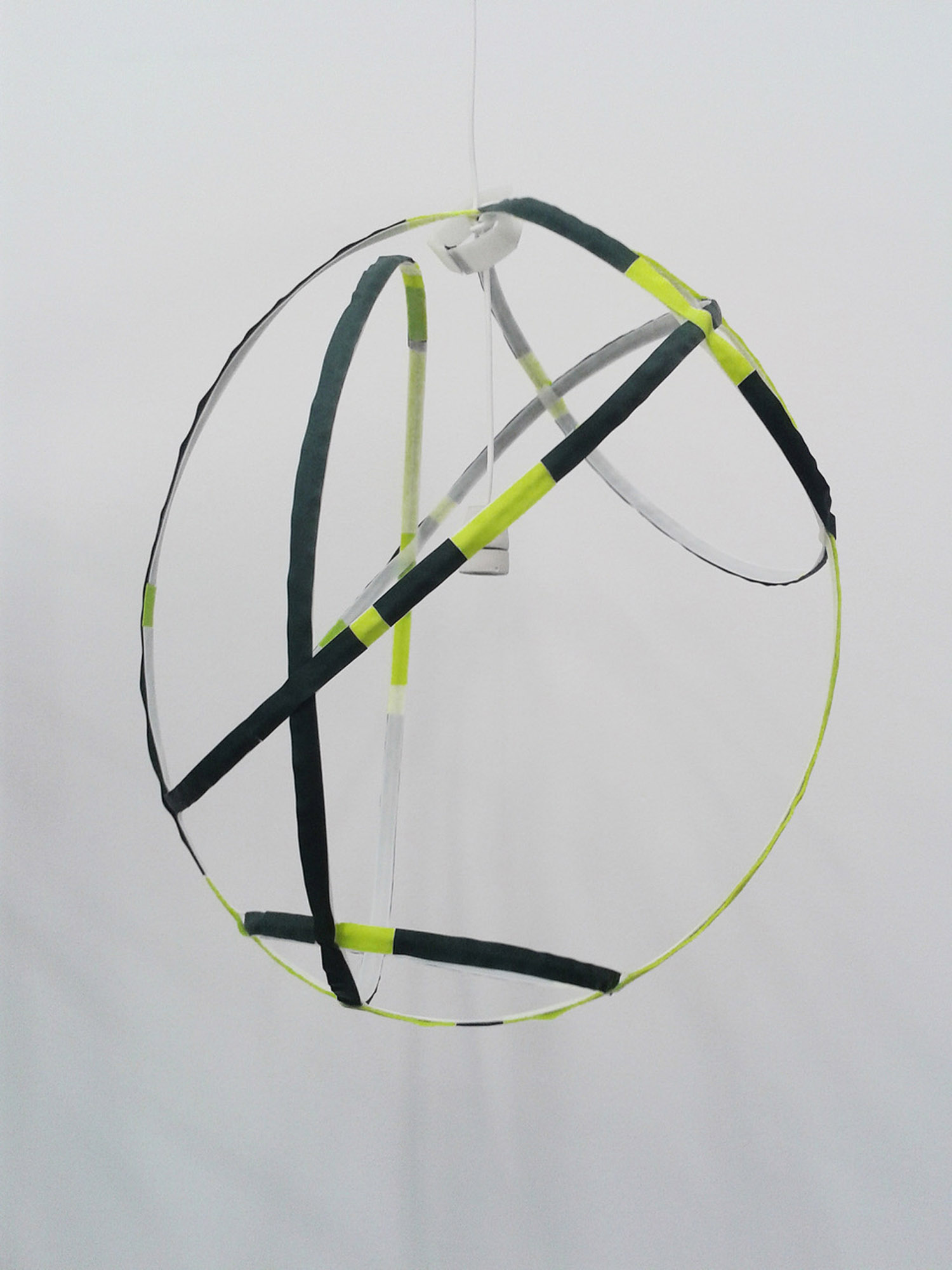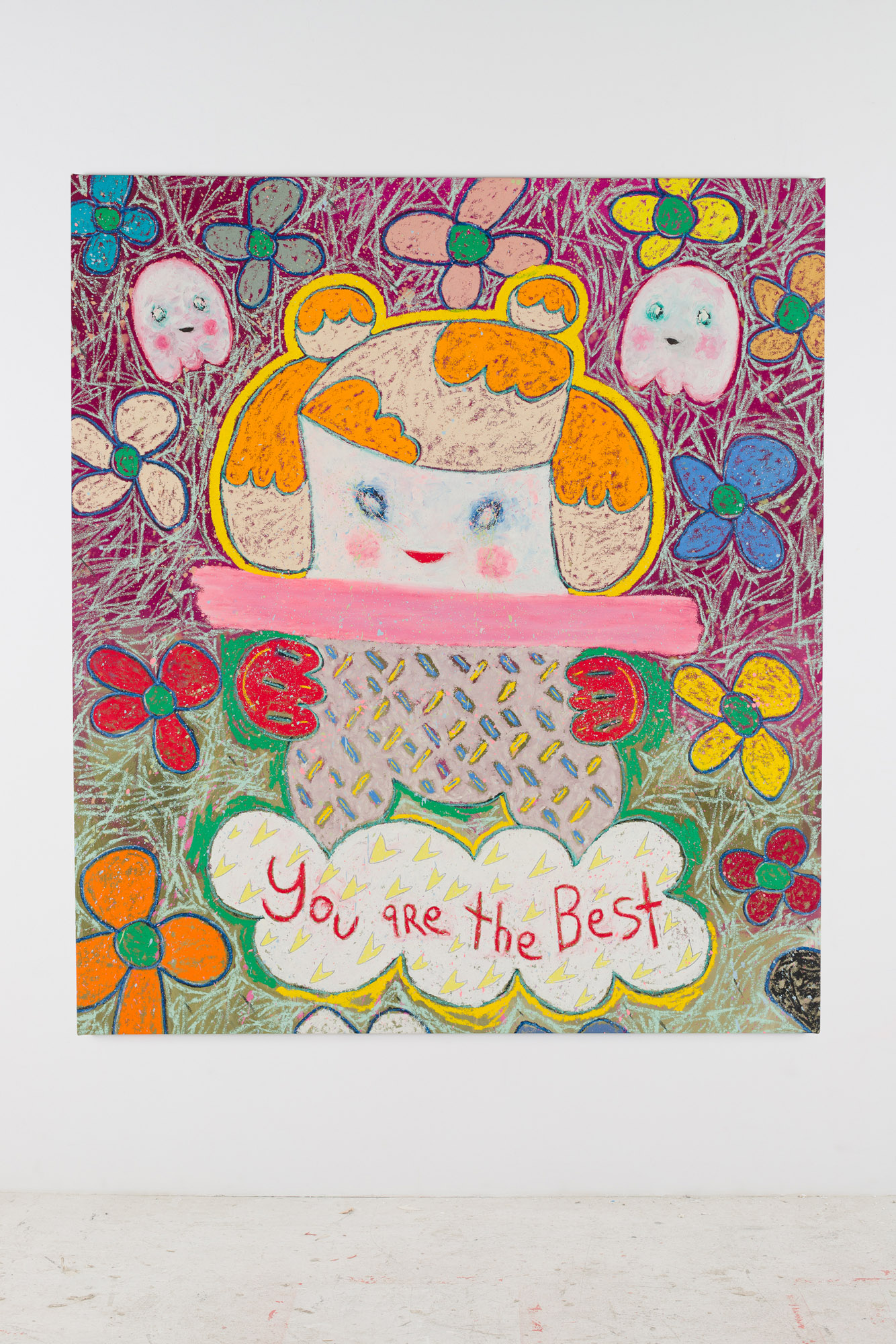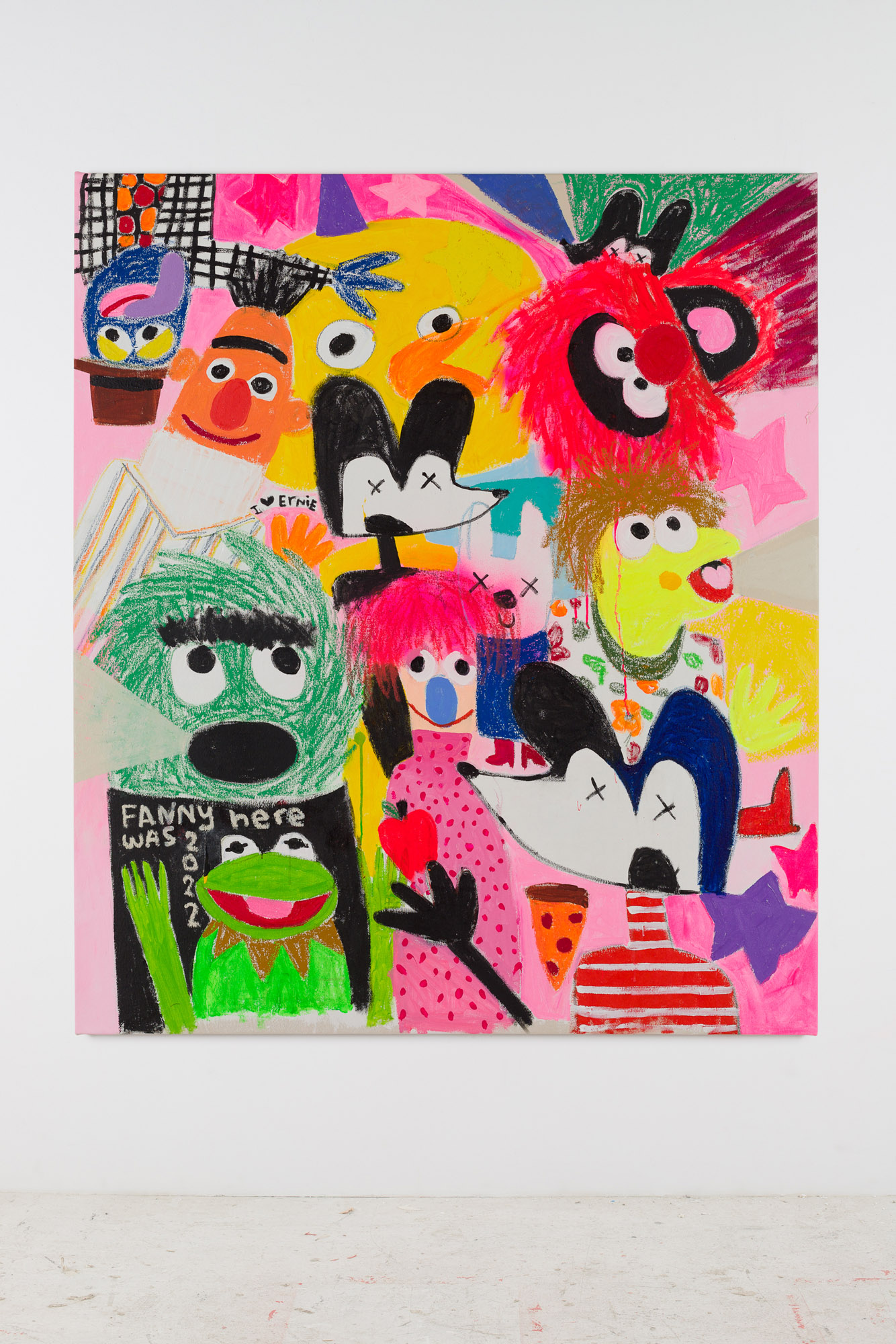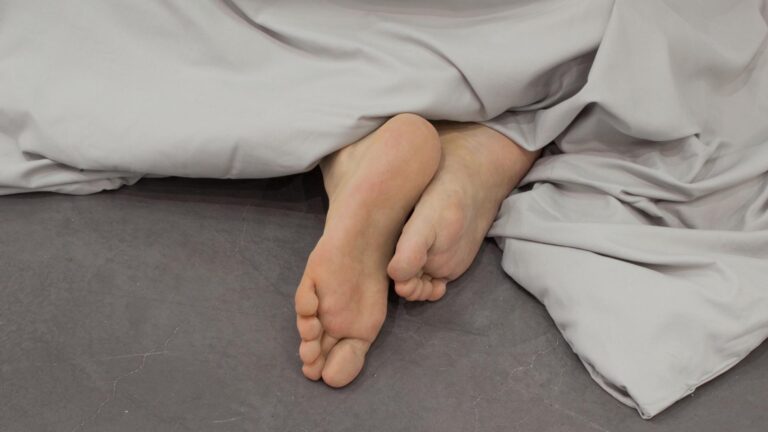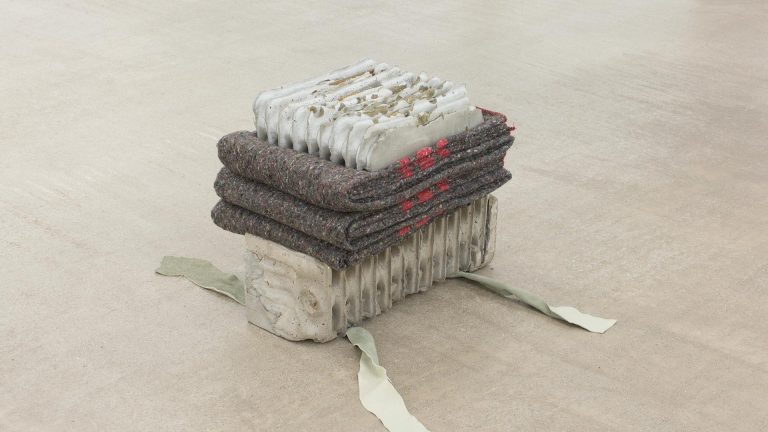Artists: Guillaume Linard Osorio, Jonathan Trayte, Fátima de Juan, Adam Handler, Ákos Ezer, Jon Burgerman, Esther Kläs & Gustavo Gomes, Ludovica Carbotta, Mie Olise Kjærgaard, NKSIN, Simon Demeuter, Fanny Brodar, Eva Beresin, Ester Partegàs, Tobias Rehberger, Fabio Finamore, Oberon Parry-Laidler
Exhibition title: You Met Me At A Very Strange Time In My Life
Venue: L21 Gallery, Mallorca, Spain
Date: October 21 – December 9, 2022
Photography: Juan David Cortés / all images copyright and courtesy of the artist and L21 Gallery, Mallorca
We must think with our hands
Jean-Luc Godard
This exhibition means the end of L21 LAB’s cycle, which began on 17 December 2021 and will conclude on 9 December 2022. We have exhibited more than 80 artists in its mazy spaces, celebrating 10 years of L21 Gallery. It has been a party.
As in the laboratory of an alchemist in search of the invisible, the processes of mixing and blending entail certain risks: a small explosion, even a fire. It happens when we experiment by taking risks, without paying too much attention to method or control, exceeding the rules. Sometimes, driven by passion, in pursuit of the vertigo produced by the strange, we act recklessly.
I’m not sure if thinking differently leads to radical experimentation, or if it’s the other way around, if it’s the experience of the strange, the unknown, that encourages us to break the rules, to exceed them. Be that as it may: without the experience of strangeness there can be no thought, as Marina Garcés says.
LAB: attempts, changes; displacing and retrying.
The exhibitions are limited to a few weeks. However, we carry the experiences that this cycle has given us; for the team, whose hands have tirelessly installed the works over and over again, and for the public, who have visited the gallery. They have been almost handcraft projects, assembled work by work, room by room, seeking dialogues, but also fractures, tensions… Texts, cut-up bodies, exhibition spaces that were expanding, dialogues that were being woven; we have enjoyed the installation a lot since we were thinking with our hands, materializing what you can’t see, but is so much present among the works.
LAB: fragments without a synthesis, widening the gap of what we consider common sense.
Pierre Teilhard de Chardin describes with Omega Point the highest dimension of consciousness’ evolution. Whereas, in DeLillo’s novel of the same name, we find insistent echoes of extinction: the word, the concept, a possible, even probable reality, disappearance, loss.
Strolling through this exhibition, I wonder if it is true that art functions as a rest, a kind of consolation that makes what surrounds us more bearable, or rather, plausible. What matters to us, speaks of ‘making a symbol’, as Ángel García González writes, “of that gathering of the separated into marvelous eloquent figures, of that dancing and singing and celebrating the not at all obscure mysteries of the discontinuity that we call dance, song and celebration, of that inhabiting of the world that art makes plausible…”. If so, the works are not extinguished, even if they fade away, even if the exhibition ends. We should think of the end not as extinction, but as change.
Better. More bearable. Ghostlier.
The desire to not let a work disappear moves someone to buy it and keep it at home, a museum to preserve it, and others to go to the gallery to look at it closely, enjoy it, think about it, talk about it, and even write about this experience. When it leaves the studio, the work begins a continuous displacement that is pure change; once it is exhibited and seen, it can no longer disappear completely, because a ghostly dimension is activated, in which something remains while almost everything is gone. A point only apparently far away.
Point Omega, is a short novel by Don DeLillo written in 2010 before L21 opened its doors. We have reread its pages, precise as a dance step, in which he describes Douglas Gordon’s video installation 24 Hours Psycho. The author focuses both on the British artist’s work and on the observation of the museum’s public. It is necessary to be serious (You should be serious?), he argues against the too hurried and distracted visit that some spectators devote to the installation, while the character in the novel spends entire days attentively watching, from both sides, the 24-hour projection of Hitchcock’s film.
Further on we read: Why is it so difficult to be serious, why is it so easy to be too serious? This exhibition proposes possible answers to this question. Some works are an antidote to excessive seriousness, others are in praise of slowness. All of them celebrate uncanniness. We lose ourselves in the whirlwinds that the works inevitably open up to the viewer who questions them. Because visiting exhibitions is like hunting ghosts, getting lost in a labyrinth in search of the invisible. How to catch what is not (entirely) solid?
The true life is not reducible to words spoken or written, not by anyone, ever. The true life takes place when we’re alone, thinking, feeling, lost in memory, dreamingly self-aware, the submicroscopic moments, this we also read in Point Omega.
I think that the experience of an exhibition should be something solitary. It is there, in an attentive solitude, dreamingly self-aware, when we manage to make something stay, in all its immateriality. Preventing it from passing without leaving anything behind. Then it will not be an extinction (near, probable, possible) but something else. Somethig that deserves to be shared with the others. Something more than a shadow, the living sensation of the memory of a heat perceived in the fabric of an empty chair.
LAB: living happily with ghosts. To dwell with what is not yet completely gone. And go out to celebrate it with others, with you.
This cycle of exhibitions, which has been dedicated to celebrate 10 years of L21 gallery, is now approaching its end. On 09/12, L21 LAB will be transformed into something else and a new space will open. It is there where we will continue to hunt for other, or the same, ghosts: Sooooooooo Long LAB, Welcome HOME.
Fátima de Juan, Shit happens, 2022, Acrylic and spray paint on canvas, 130 x 100 cm
Tobias Rehberger, Infection 3U1, 2014, Velcro, wire and electrical accessories, 90 x 91 x 93 cm
NKSIN, My Boy First, 2022, Acrylic on canvas, 116.7 x 116.7 cm
Jonathan Trayte, Apple Cholla, 2022, Stainless steel, reinforced plastic, crushed glass, resin, flock, light fittings, 189 x 103 x 54 cm
Ludovica Carbotta, Fausto Telamon, 2020, Polystyrene, water-based resin, 260.5 x 102.5 x 78 cm
Mie Olise Kjærgaard, Mum and Soccer Son, 2022, Acrylic on canvas, 100 x 120 cm
Esther Kläs & Gustavo Gomes, CAFÉ, 2021, Single-channel video, 15m 11s
Ester Partegàs, Polylumpious Tetraflacidontics (Gold + Blue), 2022, Acrylic on paper, 128 x 118 cm
Ákos Ezer, Balancing between two, 2022, Oil on canvas, 154 x 149 cm
Jon Burgerman, Vitamine, 2022, Acrylic and aerosol on Arches oil pastel paper 300gsm, 76.2 x 55.9 cm
Adam Handler, You are the best Pajama girl, 2022, Oil stick and acrylic on canvas, 162.5 x 142 cm
Fanny Brodar, A Beautiful Day, 2022, Acrylic, spray paint, and oil stick on canvas, 152 x 132 cm
Guillaume Linard-Osorio, Hypothetical landscape 16, 2022, Paint and ink on polycarbonate, 115 x 89 cm
Simon Demeuter, Mains et fleur #3, 2022, Acrylic and oil stick on canvas, 30 x 24 cm


